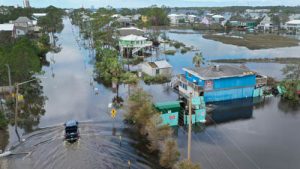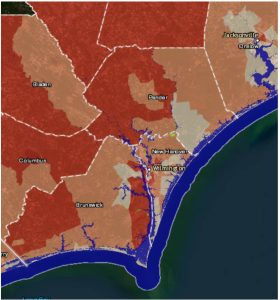Get the Picture? Climate Change Inequality in GIS
Geographic information systems (GIS) are used for viewing, analyzing, and displaying geographical data in visual form. GIS uses data that is attached to a particular location and has the advantage of improving decision making since details are mapped out and easier to understand. Other advantages include reduced project costs and increased efficiency, improved communication between involved organizations, and easy recordkeeping where the maps can also be edited.
In short, GIS allows people to view their surroundings in new ways and see the bigger picture of the geographical world. Thousands of organizations around the world use GIS to make maps that communicate their analysis and share their solutions. We humans can have difficulty understanding data spatially; GIS software seeks to bridge that gap. GIS can help group statistics together that we wouldn’t be able to understand without a larger perspective. Some of the questions that GIS can help solve through pictures could be: Where are low-income families moving to from Raleigh, North Carolina? How are wastewater treatment plants affecting water quality in Eastern North Carolina?
 Looking at climate change through the lens of GIS can help us explore the effects that it is having on the environment now, and the possible effects it may have in the future. For example, global temperatures and sea levels are rising, contributing to some of the planet’s most pressing issues. For my next project, I will first do a case study of the percentages of marginalized communities in danger of losing their homes from sea level rise in the Outer Banks and Wilmington region of North Carolina.
Looking at climate change through the lens of GIS can help us explore the effects that it is having on the environment now, and the possible effects it may have in the future. For example, global temperatures and sea levels are rising, contributing to some of the planet’s most pressing issues. For my next project, I will first do a case study of the percentages of marginalized communities in danger of losing their homes from sea level rise in the Outer Banks and Wilmington region of North Carolina.
This coastal area is incredibly vulnerable to sea level rise. According to NASA’s sea level satellite, global sea level has risen eight inches in the last century, four of which are accounted for just since 1993. Using U.S. Census data about the people who live there now, and which areas are in the FEMA floodplain mapping areas, I will be making an ArcGIS and Grass GIS map of what sea level rise will look like and how many people in the Outer Banks and Wilmington will be displaced. Such mapping will help the public understand the dire situation in which climate change has put North Carolina citizens. Visible, too, will be the fact that minority populations will be affected the most. We will also see and understand the possible future geographical locations where, because of sea level rise, they will have to move away from their homes and communities in the floodplain. Visualizing the effects of climate change like this can help stakeholders and communities to better understand its impact on them, now and in the future, and, importantly, to take action.
To the left is a map of the Wilmington, North Carolina area made from the National Atmospheric and Oceanic Administration’s (NOAA) Sea Level Rise Viewer. It has several layers in the software to help coastal areas visualize the potential impacts of sea level rise. Users can interact and view the data easily.
Grass GIS will be particularly useful in my mapping endeavor, since it can show how sea level will rise over time. It is an open-sourced software which makes it free to the public, while ArcGIS is not.
Overall, utilizing GIS for climate change concerns helps us to understand the environment geographically and helps communities understand how sea level rise will harm eastern North Carolina. But climate change is a critical and growing problem for the entire world. Communication with maps using ArcGIS and Grass GIS, or simulations like NASA’s Sea Level Rise Map, not only offers understandable data, it helps raise environmental literacy, awareness, and engagement within the large populations located near coastal areas. Thus engaged and aware of the dangerous effects of sea level rise, communities and stakeholders can collaborate, prepare for conservation and mitigation, and advocate for action.
RCC Fellow Jamie Huerta is a recent graduate of the University of Idaho where she got her Bachelor of Science in Environmental Science with a concentration in Administration and Planning, along with a minor in Natural Resource Conservation. She is pursuing her PhD in Geospatial Analytics at North Carolina State University. She is passionate about researching anthropocentric climate change and finding ways to combat it.
![]() The Rachel Carson Council depends on tax-deductible gifts from concerned individuals like you. Please help if you can.
The Rachel Carson Council depends on tax-deductible gifts from concerned individuals like you. Please help if you can.
![]() Sign up here to receive the RCC E-News and other RCC newsletters, information and alerts.
Sign up here to receive the RCC E-News and other RCC newsletters, information and alerts.








